Results 9,951 to 9,960 of 12091
Thread: Anandtech News
-
10-14-19, 01:45 PM #9951
Anandtech: Razer’s Blade Pro 17 for eSports: Now with a 240 Hz Display
Already a big name in the gaming laptop market thanks to its sizable-yet-portable form factor, Razer has announed that they're going to be expanding the range of their flagship Blade Pro 17 laptop even further with another new display option. With an eye towards eSports gamers, who are particularly keen on refresh rates and input latency, Razer is now offering the Blade Pro 17 with a 240 Hz Full-HD display.
Hitting and maintaining a frame rate of 240 fps requires a lot of graphics horsepower, so Razer is only offering its 240 Hz display option for Blade Pro 17s equipped with NVIDIA’s GeForce RTX 2070 Max-Q or GeForce RTX 2080 Max-Q GPUs. Meanwhile, other key components remained intact from other Blade Pro 17 models with a Full-HD LCD. The notebook still uses Intel’s six-core Core i7-9750H processor (2.6 GHz – 4.5 GHz) accompanied by 16 GB of DDR4-2667 memory (user upgradeable to 64 GB of DDR4-3200 memory) as well as a 512 GB PCIe 3.0 x4 SSD (expandable to 2 TB) SSD. Unfortunately, Razer only ships a 1 TB SSD with its 4K Blade Pro 17 model for now.
Past that, the 240Hz version of the Blade Pro 17 is identical to its siblings, right down to the 70.5 Wh battery and 2.75 kilograms weight. Unfortunately, Razer doesn't provide detailed battery life estimates of its different laptop configurations, so it's unclear whether the 240Hz panel comes with any drawbacks to desktop battery life, or if the real pinch will only be felt when gaming, when the display has reason to go to its maximum refresh rate.
Razer’s Blade Pro 17 notebooks with a 240 Hz display are now available to order in the US. The model equipped with NVIDIA’s GeForce RTX 2070 Max-Q retails for $2,799, while the version with NVIDIA’s GeForce RTX 2080 Max-Q starts at $3,199. These happen to be the same prices as the original 144Hz models, and as a result Razer has also discounted prices on the 144Hz Blade Pro 17 laptops with RTX 2070/RTX 2080 GPUs by $300.The Razer Blade Pro 17 General Specifications RZ09-02876*92 RZ09-02877*92 ? RZ09-02878*92 ? RZ09-03148*92 Display Diagonal 17.3" Resolution 1920×1080 3840×2160 Response Time ? ms Brightness 300 cd/m² 400 cd/m² Refresh Rate 144 Hz 240Hz 144 Hz 240Hz 120 Hz Color Gamut sRGB: 100% AdobeRGB 100% CPU Intel Core i7-9750H processor:
6C/12T,
2.6 GHz Base
4.5 GHz Turbo
12 MBRAM 16 GB DDR4-2667
Upgradeable to 64 GB DDR4-3200Graphics RTX 2060
6 GB GDDR6RTX 2070
8 GB GDDR6RTX 2080
8 GB GDDR6Storage 512 GB PCIe 3.0 x4 SSDs
Spare M.2 slot for PCIe or SATA SSDs1 TB PCIe 3.0 x4 SSD
Spare M.2 slotWi-Fi 2×2 802.11ax Wi-Fi module Bluetooth BT 5.0 General Ports 1 × Thunderbolt 3 for data, display output
1 × USB 3.12Gen 2 Type-C
3 × USB 3.2 Gen 2 Type-A
1 × HDMI 2.0b
1 × 2.5 GbEOther I/O HD webcam with IR,
TRRS connector for audio,
speakers,
microphone array,
SD UHS-III card readerDimensions (W × D × H) 395 × 260 × 19.9 mm
15.55 × 10.24 × 0.78 inchesWeight 2.75 kg | 6.06 pounds Battery 70.5 Wh Price $2,499 $2,799
$2,499$2,799 $3,199
$2,899$3,199 $3,699
Related Reading:
- Razer's Blade Pro 17 Gets a 4K 120 Hz Monitor
- Razer Launches the New Blade Pro 17: i7-9750H and RTX 2080 Max-Q
- Razer Launches The Razer Blade 15.6
- Razer Reveals New Blade Pro: GTX 1060 Graphics, Full HD, Lower Price Point
- Razer Updates The Razer Blade Pro With THX Certification
Source: Razer (via WindowsCentral)
More...
-
10-14-19, 01:45 PM #9952
Anandtech: Samsung & TSMC Develop 8nm & 7nm Automotive-Grade Nodes
As vehicles are getting ‘smarter’ and gaining autopilot capabilities, it is easy to predict that the demand for higher-performing and more complex automotive SoCs will be growing rapidly in the coming years. To produce those SoCs, specialized manufacturing lines will be needed, which is why the two leading contract chip makers, Samsung and TSMC, are working on new nodes and IP aimed precisely at automobiles.
Samsung Foundry this past week said that in the near future it would introduce a version of its 8 nm process for automotive applications. At present, Samsung has two manufacturing processes that are defined as 8 nm: 8LPP and 8LPU, which are evolved from the company’s 10 nm node. It is likely that the automotive-grade 8 nm will be a further evolution of that technology. Right now, the most advanced nodes that Samsung uses to make chips for automobiles are its 28FDS and 14 nm technologies, so an 8 nm node will be a huge step forward.
Samsung did not disclose much about its automotive-grade 8 nm process, but the comapny did note that chips for cars have to comply with AEC-Q100 reliability standards, which mandates support for a -40°C to +105°C ambient operating temperature range, as well as a number of qualification reliability tests such as wear-out tests. Furthermore, to win designs with leading auto makers, these chips have to be made in facilities that have an IATF 16969-certified supply chain quality management system, which in short emphasizes defect prevention and variation reduction. Furthermore, any IP being fabbed, as well as development tools and the final devices themselves have to meet various ISO 26262 (aka ASIL) functional safety requirements, both individually and in context of a particular application.
Meanwhile, over in Taiwan, TSMC’s most advanced automotive-grade process technology today is 16FFC, which is current-generation as far as the automotive market is concerned, as it lags consumer SoC designers by two or three years. Looking towards the near future, TSMC has been developing an automotive-grade version of its N7 (1st Generation 7 nm) technology for quite a while, and expects it to be qualified by 2020. In fact, Synopsys has already developed essential automotive-grade IP for N7 (including DesignWare IP for LPDDR4X, MIPI CSI-2, MIPI D-PHY, and PCIe 4.0 IP), so chip designers are probably already working on new SoCs for vehicles to be made using TSMC’s leading-edge process.
Finally, while GlobalFoundries no longer develops leading-edge process technologies, it still has numerous nodes that can be used by the automotive industry for years to come, including 22FDX and 12LP. For now, these technologies are good enough for advanced SoCs, but it remains to be seen what the company offers to its clients from the auto industry.
Related Reading:
- Samsung Foundry Updates: 8LPU Added, EUVL on Track for HVM in 2019
- Samsung’s 8LPP Process Technology Qualified, Ready for Production
- Samsung’s Intros Exynos Auto V9 SoC: Octa-A76 Chip to Power Audi’s In-Vehicle Infotainment System
- GlobalFoundries and Synopsys Develop Automotive-Grade IP for 22FDX Process Tech
- Arm Unveils Arm Safety Ready Initiative, Cortex-A76AE Processor
- Imagination Launches PowerVR Automotive Initiative, 8XT-A GPU IP
- Bosch and NVIDIA Team Up for Xavier-Based Self-Driving Systems for Mass Market Cars
Sources: Samsung, TSMC, SemiWiki
More...
-
10-14-19, 06:50 PM #9953
Anandtech: HP Unveils Chromebox Enterprise G2: A Chrome OS-Based Business Desktop
Business and enterprise desktops is an interesting market recently - on the one hand, because extended support for Windows 7 nears its end early in 2020, multiple companies are eager to buy new PCs; on the other hand, margins are low and competition between suppliers is cut-throat. To minimize competition, HP has released one of the industry’s first Chromebox for Enterprise: a UCFF desktop PC for frontline workers, call centers, shared spaces, kiosks, or digital signage applications.
The Chromebox Enterprise G2 comes in a small 14.93×14.93×4 cm black box that packs Intel’s 7th Generation dual-core Core i3-7130U with UHD 620 graphics CPU or Celeron 3867U with UHD 610 graphics CPU that is paired with 16 GB DDR4-2400 DRAM as well as an M.2 SSD.
In a bid to meet requirements of all possible applications, the Chromebox Enterprise G2 features rather vast connectivity capabilities that include GbE, Wi-Fi 5, Bluetooth 4.2, three USB 3.0 Type-A ports, two USB 2.0 Type-A ports, one USB Type-C connector, one HDMI display output, one 3-in-1 SD card reader, and a 3.5-mm headphone jack. Depending on configuration, the Chromebox Enterprise G2 comes with a 65 W or a 90 W power brick.
Unlike Chromebooks, Chromeboxes have not really gained traction on the market partly because people expect high performance and advanced multimedia capabilities from their desktops, but mostly because people are so used to Windows programs. By releasing a Chromebox for Enterprise, HP obviously faces some risks, but believes that since many people use web-based apps nowadays, they will use a Chrome OS-based desktop without any problems. Meanwhile, the advantage of web-based applications is also their disadvantage because they depend on reliability of Internet connection. On the other hand, one indisputable trump that HP’s Chromebox Enterprise G2 has is support for numerous capabilities aimed precisely at businesses, including 24/7 Google support, automatic software updates through June 2024, virus protection, sandboxing, verified boot, remote management, and easy deployment. All in all, it will be interesting to sell how successful HP’s Chromebox for Enterprise is going to be.HP's Chromebox Enterprise G2 Model Celeron Core i3 CPU Intel Celeron 3867U
(2C, 1.8 GHz, 2 MB cache)Intel® Core i3-7130U
(2C, 2.7 GHz, 3 MB cache)GPU Intel HD Graphics 610 Intel HD Graphics 620 DRAM 16 GB DDR4-2400
Two DDR4 SO-DIMM slotsMotherboard proprietary Storage SSD 32 GB or 64 GB M.2 SSD DFF - SD 3-in-1 card reader Wireless Intel Dual Band Wireless-AC 7265 802.11ac (2x2) and Bluetooth 4.2 Ethernet 1 × GbE port (Realtek RTL8151GH-CG GbE LOM) USB Front 1 × USB 3.0 Type-A Back 1 × USB 3.0 Type-C
1 × USB 3.0 Type-A
2 × USB 2.0 Type-ADisplay Outputs 1 × HDMI Audio 1 × 3.5mm audio jack for headsets (Realtek ALC5662-CG codec) PSU External 65 W External 90 W Warranty Typical, varies by country Dimensions Length: 14.93 cm | 5.87 inches
Width: 14.93 cm | 5.87 inches
Height: 4 cm | 1.57 inchesOS Chrome OS with Chrome Enterprise Upgrade MSRP ? ?
HP’s Chromebox Enterprise machines will be available in November. Pricing will depend on configurations.
Related Reading- HP Unveils Chromebooks for Enterprise: AMD and Intel
- HP at CES 2019: HP Chromebook 14 Combines AMD and Chrome OS
- HP Unveils Premium Chromebook: 3K Display, Intel Core M, 16 GB of RAM and USB-C
- Acer’s Chromebox CXI3 Available in Four Configs: Up to Core i7-8550U, Up to $777
- Acer Announces New Chromebooks And Chromebox Devices
Source: HP
More...
-
10-15-19, 10:32 AM #9954
Anandtech: PCIe 6.0 Dev Reaches v0.3; On-Track for a Full Specification In 2021
Having wrapped up their work on the PCI-Express 5.0 specification earlier this year, the PCI-SIG wasted no time in getting to work on the next version of the specification, PCIe 6.0. That specification, which is expected to be finished in 2021, will once again double PCIe’s bandwidth to 64 GigaTransfers/second – or roughly 128GB/sec (each direction) for a x16 slot – thanks to some high-end encoding technologies like PAM4.
At the time that PCIe 6.0 was first announced, the group was just beginning work on the specification. And now a few scant months later, the group has released a brief update, announcing that they have already completed version 0.3 of the new spec.
The announcement itself is light on technical details, as the design goals and major underlying technologies for PCIe 6.0 were announced at the very start of the project. However the organization is keen to ensure that PCIe development continues moving at a steady pace, to avoid repeating the long gap between 3.0 and 4.0.
And the group’s members will certainly be busy. Even with the 0.3 specification in hand, it’s going to be nearly another two years before the specification is done, reflecting on the fact that there’s a lot of work left to be done to solve the technical challenges in developing PCIe 6.0, and bringing new signaling standards into the specification while maintaining backwards compatibility.
More...
-
10-15-19, 10:32 AM #9955
Anandtech: AMD Refreshes Embedded GPU Lineup, Launches Polaris-Based Embedded Radeon
AMD’s GPU division has long had its hands in many businesses. While their consumer GPUs and semi-custom efforts tend to attract the most attention – and more recently, their GPU co-development deal with Samsung – it’s still not the entirety of AMD’s GPU efforts. The company also has an arm of the GPU business developing products for the embedded market, which aptly enough are sold as AMD’s Embedded Radeon products.
With extremely long product cycle times and niche use cases, we don’t regularly hear from the Embedded Radeon team. In fact, prior to today, the last time the company announced anything was three years ago with the E9000 series of products. But this week with the Global Gaming Expo taking place in Las Vegas (ed: so the gambling kind of gaming), AMD’s embedded group has popped up to announce a couple of new products.
Being revealed today are the Embedded Radeon E9560, and its lower-power counterpart, the E9390. Both are based on AMD’s Polaris 10 GPU, and are designed to fit in to AMD’s existing E9000 family of embedded video cards, as part of what AMD calls its “ultra-high performance” band. The E9560 is a 36 CU part with a max TDP of 130 Watts, and will become AMD’s highest performing Embedded Radeon part yet. Meanwhile the E9390 is a 28 CU part with a lower TDP of 75W, allowing it to work in systems without an auxiliary PCIe power connector.AMD Embedded Radeon Discrete Video Cards Radeon E9550 Radeon E9390 Radeon E9550 Radeon E9260 CUs 36 28 36 14 GPU Boost Clock ~1.24GHz ~1.09GHz 1.12GHz 1.4GHz Memory Type GDDR5 GDDR5 GDDR5 GDDR5 Memory Bus Width 256-bit 256-bit 256-bit 128-bit VRAM 8GB 8GB 8GB 4GB Displays 6
(4x DP 1.4)6
(4x DP 1.4)6 5 TDP Up To 130W Up To 75W Up To 95W Up To 50W GPU Polaris 10 Polaris 10 Polaris 10 Polaris 11 Architecture GCN 4 GCN 4 GCN 4 GCN 4 Form Factor FHSS PCIe
9.5-inchesFHSS PCIe
6.8-inchesMXM MXM & PCIe
These parts are, to be honest, unremarkable from a technical perspective. And AMD’s own announcement is fairly low key to match. AMD already offers a Polaris 10-based part here, the E9550, so the newest parts aren’t bringing new features to the table. Nor are AMD’s gaming customers necessarily looking for something new.
Instead, the thrust of AMD’s announcement today is on the business side of matters. As casino gaming is a conservative, long cycle business where individual parts need to be qualified, AMD offers a limited number of products for a number of years to meet those needs. Specifically, AMD guarantees that it will offer its Embedded Radeon products for a minimum of 3 years. And, as it so happens, the last Embedded Radeon products were announced 3 years ago.
So, with the originally planned sales cycle for their E9000 parts coming to an end, AMD is refreshing their lineup of Polaris-based parts for another 3 years. The new parts being introduced today will let AMD fine-tune the upper-end of its product stack by offering both a higher performance part and a high-end part that can work off just a PCIe slot. Meanwhile the E9550, E9260, and E9175 are being renewed for another 6 years. With availability planned to go into late 2022, these parts will end up having a 6-year sales lifecycle once all is said and done.
And getting there will be a bit more of a challenge than in past cycles. The entire E9000 series is GDDR5-based, and AMD is entering in a new 3-year cycle right as the GDDR5 to GDDR6 transition is underway in earnest. As a result, the company is taking additional steps to ensure that it can meet its own availability guarantees – and that their gaming customers are aware of this. Many of those customers are already aware of the memory transition itself, so AMD is paying the issue special attention to satisfy customers who absolutely need these parts available for the entire 3-year window. Ultimately Embedded Radeon GPUs will make the transition as well – I’d consider it a foregone conclusion that AMD will have Navi-based parts at some point in the next year or so – but their embedded customers are also going to need Polaris parts for a while still.
Otherwise, the new parts are exactly what it says on the tin: more of the same, both in terms of features and planned support. Gaming operators will want to take note of the available form factors, however: AMD is only slated to offer the new E9000 series cards in full-height PCIe cards. Typically, AMD has offered Embedded Radeon parts in MXM and the occasional PCIe form factor, but this isn’t the case here. As a result, these newest parts become the first Polaris 10-based PCIe cards in the Embedded Radeon family, while AMD will continue to offering the MXM E9550 alongside all of this.
Gallery: AMD Embedded Radeon 2019





More...
-
10-15-19, 02:09 PM #9956
Anandtech: OWC Mercury Elite Pro Dock / DAS Combo: TB3, up to 28 TB, USB 3.0, DP, GbE
OWC has started sales of its new DAS device that can also serve as a Thunderbolt 3 dock. The Mercury Elite Pro Dock is aimed at creative professionals with the latest Thunderbolt 3-enabled laptops that require a significant amount of storage capacity along with a set of traditional interfaces, including USB 3.0 Type-A, DisplayPort, GbE, and an SD card reader.
OWC is a well-known name in the Mac world as for years the company made accessories and upgrades for Apple’s computers. Since modern MacBooks cannot be upgraded, the company had to refocus to docks and now moves forward with its Mercury Elite Pro Dock that also serves as a DAS.
The OWC Mercury Elite Pro Dock is based on Intel’s JHL6540 controller and can be daisy chained with other Thunderbolt 3 devices. On the DAS side of matters, the OWC Elite Pro Dock can pack two 2.5/3.5-inch hard drives and supports RAID0, RAID 1, JBOD, and Span modes to maximize reliability (by mirroring them), double their sequential read/write speeds all the way to ~530 MB/s in case of two 14 TB HDDs (by striping them), or just use them as two separate hard drives or one big drive. RAID is enabled by an ASMedia controller and its mode can be manually switched using a special switch on the back.
OWC plans to offer its Mercury Elite Pro Dock in multiple versions to hit different price and capacity points. All the SKUs will come with two hard drives and offer a 4 TB, 6 TB, 8 TB, 12 TB, 16 TB, 20 TB, 24 TB, and 28 TB capacity.
On the dock side of things, the devices has a GbE port (Intel I210), two USB 3.1 Gen 1 Type-A connectors (Fresco Logic FL1100EX), a DisplayPort 1.2 output, and an SD Card reader (Genesis Logic GL-3227). The OWC Elite Pro Dock can output up to 120 W of power and therefore can power a laptop as well as charge USB devices at the same time.
OWC’s Mercury Elite Pro Dock can be acquired as a DIY kit without any hard drives inside for $319.99 or as a ready-to-go product with two HDDs in RAID 0 inside. The cheapest 4 TB version costs $519.99, whereas the highest-end 28 TB model is priced at $1,399.99. Interestingly, but OWC does not commit to a particular hard drive model or even a manufacturer and ships its device with either Seagate or Toshiba HDDs inside.The OWC Mercury Elite Pro Dock General Specifications Number of Bays 2 bays for 2.5" or 3.5" HDDs HDD Interface SATA 6 Gbps HDDs Used Seagate or Toshiba HDDs Capacities Up to 28 TB RAID 0/1/JBOD/Span RAID0 Up to ~530 MB/s (depends on HDD) RAID1 depends on HDD Thunderbolt 3 Controller Intel JHL6540 RAID Controller ASMedia controller GbE Controller Intel I210 USB 3.0 Controller Fresco Logic FL1100EX Media Card Reader Controller Genesis Logic GL-3227 Ports 2 × Thunderbolt 3
2 × USB 3.0 Type-A
1 × DisplayPort 1.2
1 × SD card reader
1 × GbEPower Input 100-240V, 50-60Hz Power Output +12V, 10A Dimensions Height: 5.8 inches | 147 mm
Length: 9.4 inches | 238 mm
Width: 3.3 inches | 85 mmCables Included ? Software OWC Dock Ejector Price (MSRP) $320 for DIY kit
$520-$1400 for Drives Included
Related Reading- LaCie Announces 2big Dock: 2-Bay TB3 DAS with Card Reader, USB-A and DisplayPort
- LaCie Announces 2big Dock: 2-Bay TB3 DAS with Card Reader, USB-A and DisplayPort
- Promise Launches Pegasus3 External Storage via TB3: Up to 48 TB, 1.6 GBps
- LaCie Launches 6big and 12big: Up to 60/120 TB External Storage with Thunderbolt 3
Source: OWC
More...
-
10-15-19, 02:09 PM #9957
Anandtech: Nova 5T: Huawei Can Still Make New Phones With Google Services (sort of)
Today at a small event in Paris, Huawei announced its latest device for the more mass market: the Huawei Nova 5T. The Nova line from Huawei is part of its strategy to address the wider market with almost up-to-date components: it is priced well below the P series and Mate series flagships, but has the hardware inside from high-end devices launched earlier this year, all for a modest cost. This time around, the Nova gets a redesign, and despite US-China issues, this device has Google Media Services installed.
More...
-
10-15-19, 08:19 PM #9958
Anandtech: Samsung to Invest $11 Billion in QD-OLED Panel Production
Samsung Display has announced plans to invest a further ?13.1 trillion ($11 billion) in the R&D and production of QD-OLED TV panels. The plan includes building up two QD-OLED production lines in South Korea between now and 2025, with the first starting production in 2021. In addition, the company will invest in R&D of quantum dot-enhanced OLED technology, which promises to provide finer colors than today’s OLED displays and televisions.
The first step of Samsung’s QD-OLED plan will be converting its L8 fab in Tangjong, South Korea, from making LCD substrates to QD-OLED substrates. The plant is expected to produce 30 thousand QD-OLED substrates per month starting in Q1 2021. Longer term, Samsung will be converting all of its 8th Generation LCD production facilities to QD-OLED in a bid to increase the number of substrates produced monthly to 100 thousand.
The QD-OLED technology promises to simplify (i.e. lower the cost of) production of OLED-based televisions and monitors, as well as enabling wider color gamuts, which is something expected from next-generation content. Contemporary WOLED panels from LG Display use a blue or white (yellow + blue) OLED emitter stack, and a WRGB color filter system on top with a variety of additional layers behind, between, and ahead of them. By contrast, a QD-OLED panel uses an OLED emitter stack (some believe, with two emitting stacks) with a quantum dot RGB color filter (also called quantum dot color converter, or QDCC) system on top.
Today’s OLED panels feature 22 layers, whereas a QD-OLED panel may cut the number to 13, which means fewer deposition stages, lower material and production costs, and, perhaps, better yield. The QD-OLED technology is still considered to be rather challenging as Samsung has to solve light management issues. Meanwhile, according to Display Supply Chain, one square meter of an QD-OLED panel will cost around $26, whereas one square meter of a contemporary OLED panel costs approximately $95.
Lee Dong-hoon, CEO of Samsung Display, had the following to say:Related Reading:
"Quantum dots are semiconductor particles which luminate close to natural colors. It is the future growth vision of the large display industry. With the investment we will lead the premium display market."
- Samsung Mulls Suspending South Korea LCD Plant Due to Oversupply
- Samsung Acquires Quantum Dot Tech Company QD Vision
- Samsung’s 8K QLED TV 55-Inch: A More Affordable 8K Ultra-HD TV
- 8K Association Sets Minimal Specs for 8K Ultra-HD TVs
- Sharp to Demonstrate 120-Inch 8K LCD TV & 8K TV with 5G Modem at IFA
- AU Optronics's New 85-Inch 8K LCD TV with 1,024-Zone Backlighting
- Samsung's 2019 QLED UHD TVs: 8K TVs Revamped, 4K TVs Get New Panel & Backlighting
Sources: Reuters, Nanosys, The Investor, Nikkei, DSCC, OLED-Info
More...
-
10-15-19, 08:19 PM #9959
Anandtech: Google Announces The Pixel 4 and Pixel 4 XL: The 2019 Pixels
Today Google announced the new Pixel 4 and Pixel 4 XL flagship devices, representing Google's vision for 2019 and 2020. The new phones upgrade the hardware to the latest and greatest, such as introducing a new 90Hz display. The new phones come with a new design language that does differ more significantly from its predecessors, with some risky choices in terms of the new features that the new generation drops as well as adopts.
As always, Google prides itself in the camera of the Pixel phones and this year we kinda saw the new Pixel go against the flow of industry trends, and instead of adopting a much hyped ultra-wide-angle module, Google doubled down on a new telephoto camera. However Google's forte remains software, and here alongside new camera features, Google also brings new features to the table, such as a new upgraded voice recognition aided by machine learning that's been used both for the new Assistant, as well as new apps such as the live transcription recorder app
More...
-
10-16-19, 01:35 PM #9960
Anandtech: LGA4677 Socket Spotted: Future Server Socket with PCIe 5.0 Support
TE Connectivity, a maker of various connectivity solutions in general and CPU sockets in particular, has revealed its roadmap describing future sockets for what looks like a range of future server processors. The roadmap reaffirms that Intel’s upcoming server CPUs will use LGA4189 sockets and indicates that some form of future CPU will use a larger LGA4677.
TE's LGA4677 socket will be made by the company starting from 2021, and is listed on the diagram as supporting PCIe 5.0. It is noteworthy that according to the manufacturer, LGA4677, LGA4189 and LGA3647 sockets will coexist on the market. This is likely due to long-standing contracts using existing sockets and requiring like-for-like replacements over the lifetime of the hardware.
Considering a significant increase in the number of pins featured by LGA4677 (compared to LGA4189 that will be used for Cooper Lake and Ice Lake server CPUs), it is logical to expect it to support processors with a higher TDP. Meanwhile, it is too early to make guesses about exact TDP levels. Alongside improvements in PCIe, we could also consider increases in memory controller counts as a strong indication of more pins.
No large server CPU company has formally confirmed existence of LGA4677 socket in its roadmap.
Related Reading- Intel’s LGA4189-4 and LGA4189-5 for Cooper Lake & Ice Lake CPUs Now Available
- Power Stamp Alliance Exposes Ice Lake Xeon Details: LGA4189 and 8-Channel Memory
- Intel Xeon Update: Ice Lake and Cooper Lake Sampling, Faster Future Updates
- Intel to Offer Socketed 56-core Cooper Lake Xeon Scalable in new Socket Compatible with Ice Lake
- Intel Architecture Manual Updates: bfloat16 for Cooper Lake Xeon Scalable Only?
- Cisco Documents Shed Light on Cascade Lake, Cooper Lake, and Ice Lake for Servers
Sources: Kazuki Kasahara, PC Watch
More...
Thread Information
Users Browsing this Thread
There are currently 18 users browsing this thread. (0 members and 18 guests)




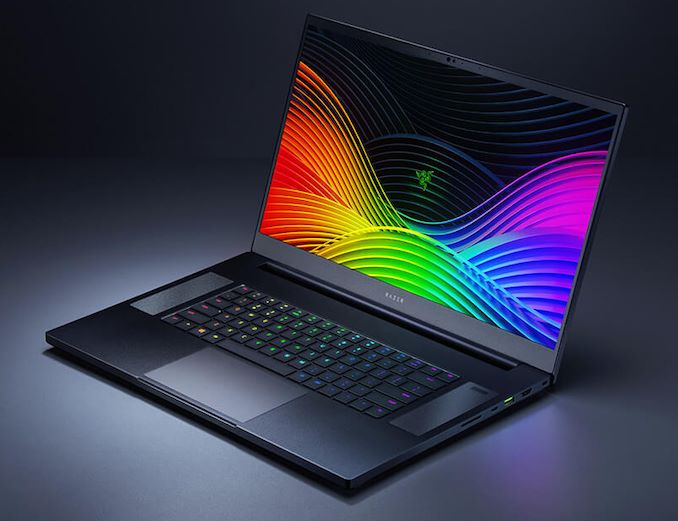
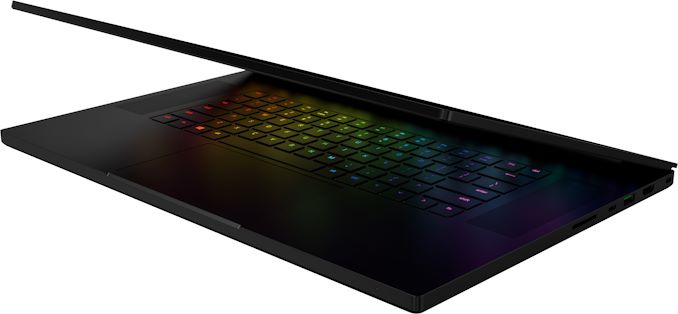

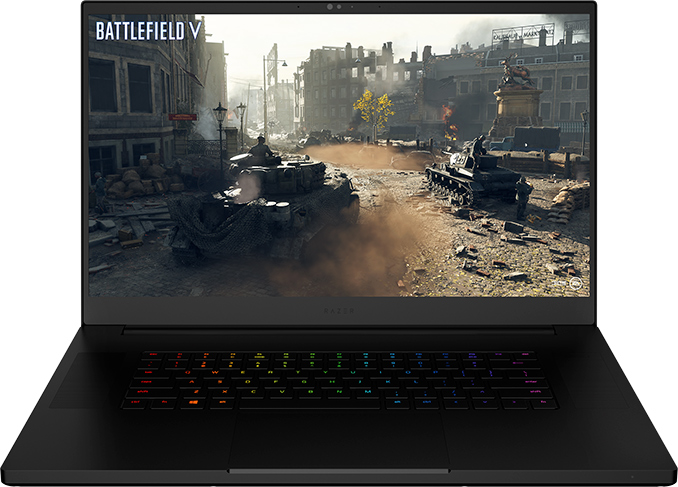

 Quote
Quote


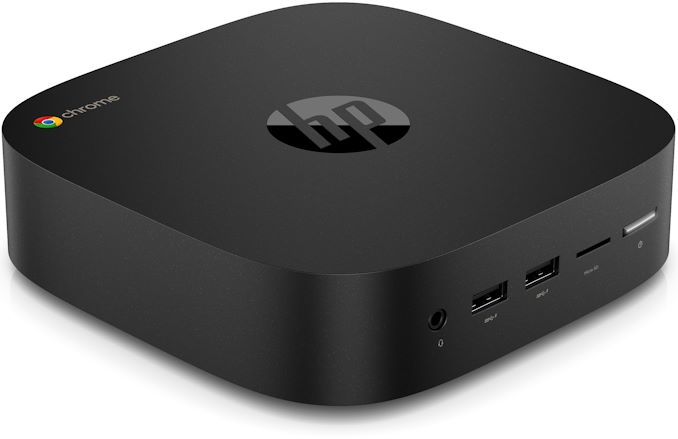
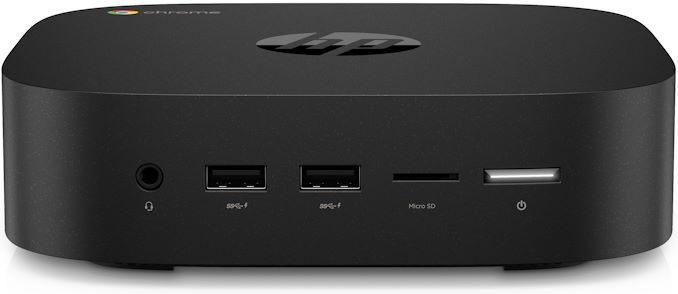

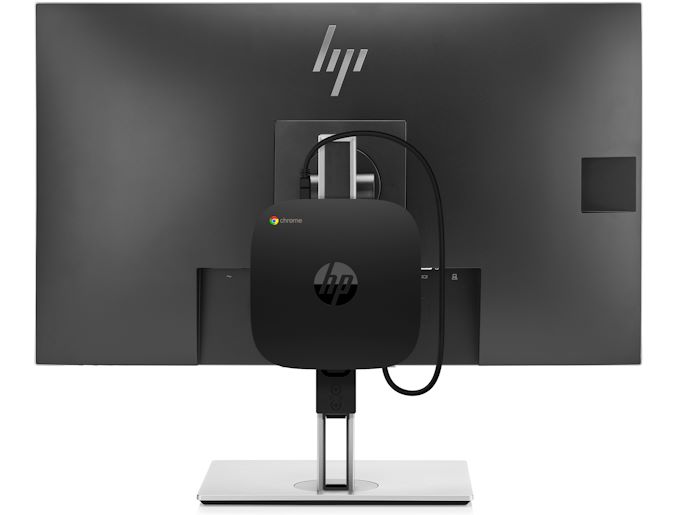
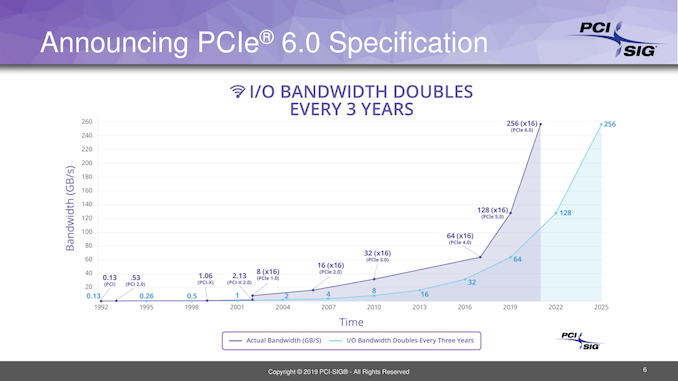
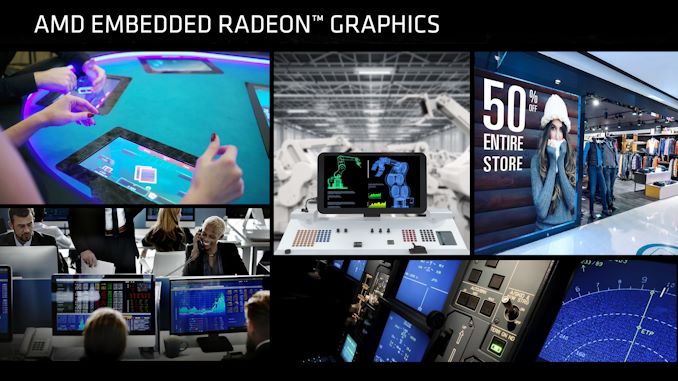
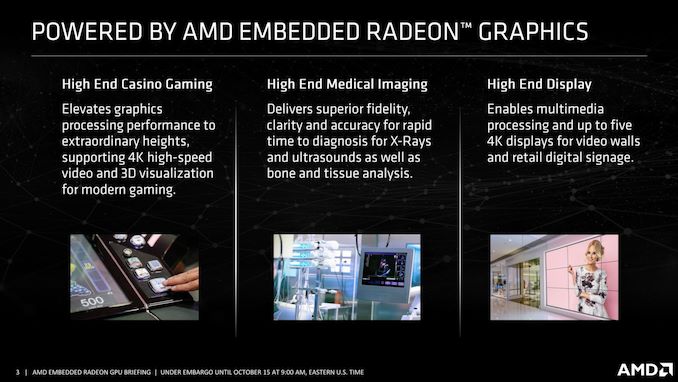
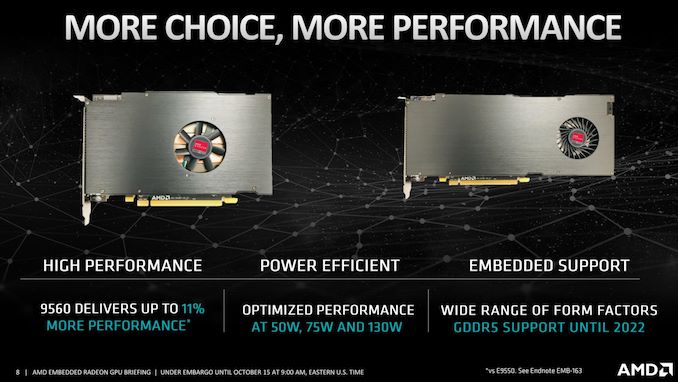
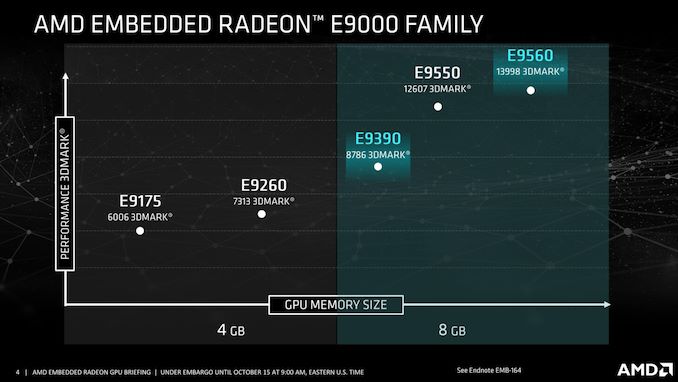
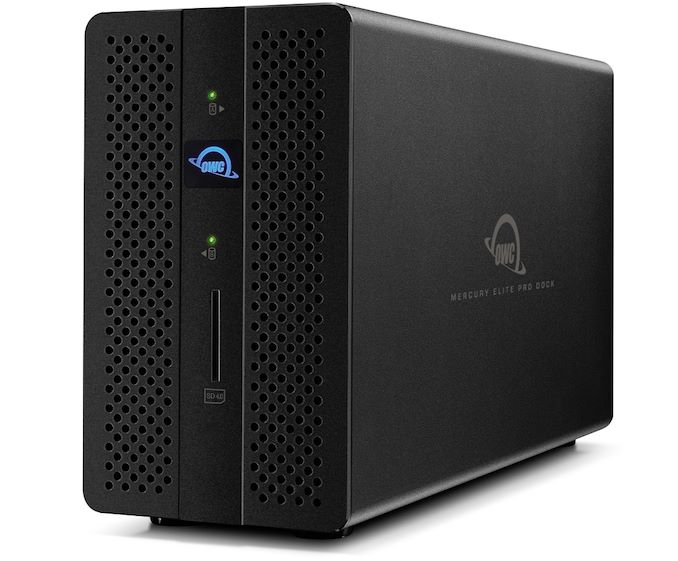
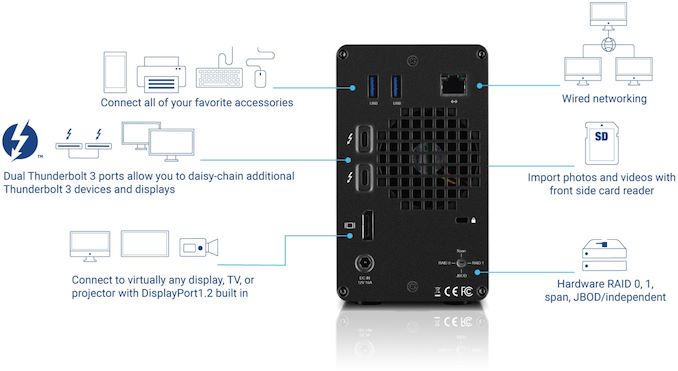
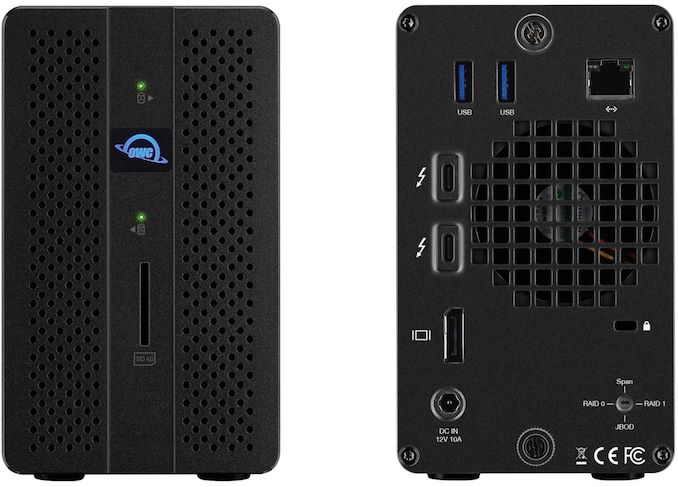

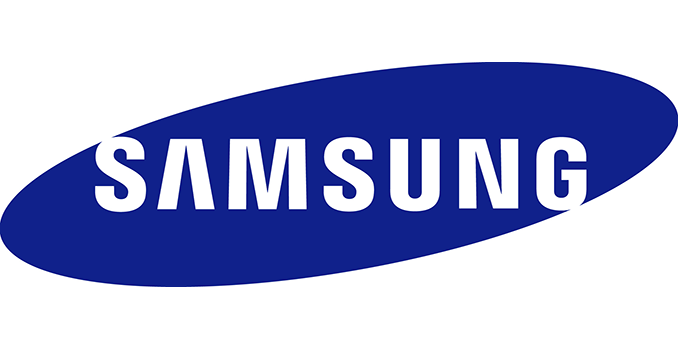

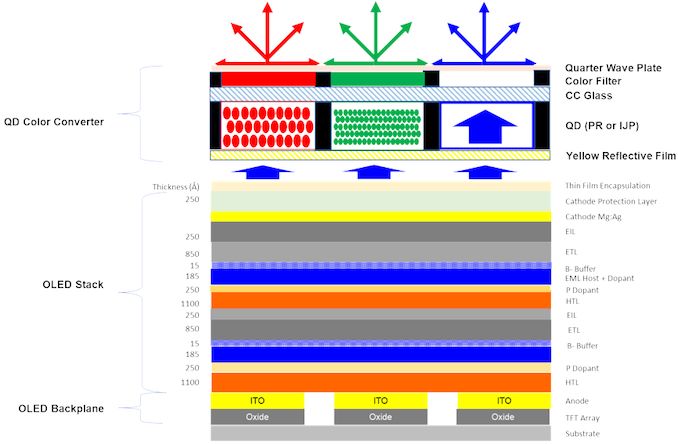

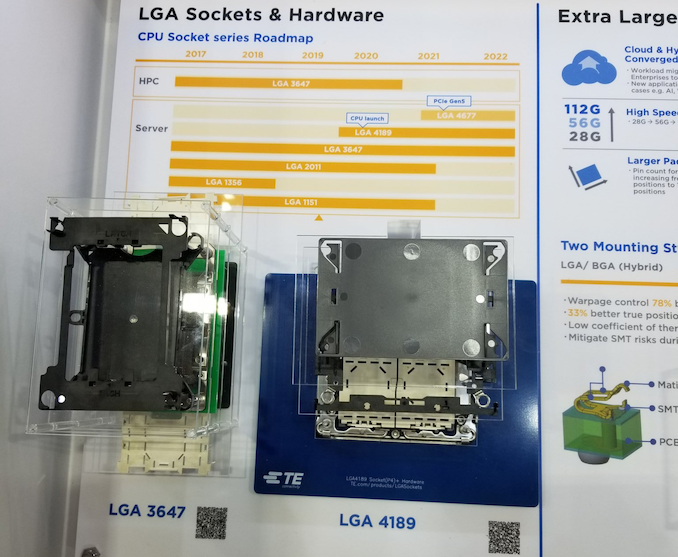
















Bookmarks